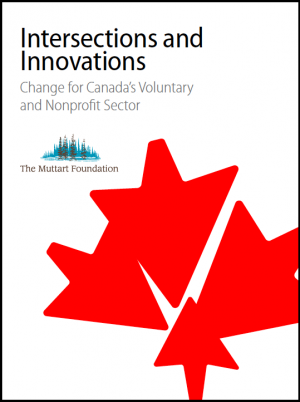Excerpt from Chapter 4 of the book “Intersections and Innovations: Change for Canada’s Voluntary and Nonprofit Sector,” edited by Susan Phillips and Bob Wyatt and published as a free e-book by the Muttart Foundation.
Chapter 4: It Should Have Been So Simple: The Regulation of Charities in Canada
By Bob Wyatt
…But if anything is clear about the federation that is Canada, it is this: nothing is simple.
How, then, did we get to the point where the federal government – through the Canada Revenue Agency (CRA) – has become the de facto regulator of charities, with provinces playing a perfunctory (if that) role?
Spoiler alert: it boils down to the almost-meaningless distinction between “charities” and “registered charities.”
The Complaints and the Alternatives
 Like most government departments and agencies, the Charities Directorate has had complaints over the years about delays and inconsistent responses. While the publication of its “guidance products” online has been helpful, one still hears concerns about the length of time it takes to process an application for registration of a charity or difficulties in obtaining an interpretation of one or the other of the guidance products in a specific fact situation.
Like most government departments and agencies, the Charities Directorate has had complaints over the years about delays and inconsistent responses. While the publication of its “guidance products” online has been helpful, one still hears concerns about the length of time it takes to process an application for registration of a charity or difficulties in obtaining an interpretation of one or the other of the guidance products in a specific fact situation.
The more substantive complaints tend to fall in one of two categories. There are those who believe that it is inherently wrong for CRA to be the regulator of charities because of a conflict of interest. And there are those who have complaints about a particular action or series of actions that CRA has undertaken. The second type of complaint often morphs into the first, but both have the same goal: moving the regulation of charities to some body that is independent of government.
Drache and Hunter (2000) argue that there was no alternative but to establish an independent commission:
We also take the position that organizational changes are extremely difficult, if not impossible. We do not believe that it is prudent to try to counteract the problems inherent in having a department dedicated to maximizing tax revenues make social policy decisions, particularly where a decision to recognize an organization as charitable de facto implies a loss of tax revenue.
They considered three options that had been described by the initial regulatory table of the Voluntary Sector Initiative and found all of them lacking. Instead, they proposed a Charity Tribunal, which would, initially, serve as the body that decided on the registration of charities and the revocation of such registration. They looked to the Charity Commission for England and Wales for practices but suggested that simply replicating the model was not a viable option for a variety of reasons, including matters of constitutional law. Their fundamental premise, though, was that the conflict between the role of tax collector and decision-maker about charities could never be resolved.
Click here for access to a pdf of Chapter 4, “It Should Have Been So Simple: The Regulation of Charities in Canada” (including sources), by Bob Wyatt, as well as access to other chapters.
Bob Wyatt is the Executive Director of the Muttart Foundation.
Friday, August 20, 2021 in Intersections & Innovations
Share: Twitter, Facebook



